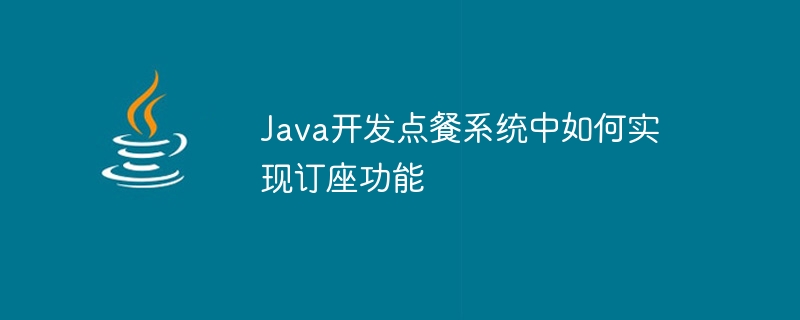

How to implement the reservation function in Java development of ordering system
With the rapid development of the Internet and mobile technology, the ordering system has become an important part of the catering industry. Customers no longer need to go to the restaurant in person, they can easily order food through mobile phones or the Internet and choose a table that suits them. For restaurants, providing a reservation function can better manage the dining process and improve service quality and efficiency.
In order to realize the reservation function, we can use Java technology and features to develop a powerful and easy-to-use ordering system. The following are some suggestions for implementing the reservation function in Java development:
Through the above steps, we can implement the reservation function in the ordering system developed in Java. This function will help restaurants provide better services, improve dining efficiency, and also facilitate customers' dining arrangements. During the development process, user interface design, database design, and backend logic writing need to be comprehensively considered, as well as coordination with other modules.
Of course, implementing the seat reservation function is only a sub-function of the ordering system, and there are many other functions that need to be considered and implemented. Therefore, during the development process, it is necessary to comprehensively consider various factors, flexibly use Java technology, and make adjustments and optimizations according to actual needs. Only by continuous learning and innovation can we develop high-quality software that meets user needs.
The above is the detailed content of How to implement reservation function in Java development ordering system. For more information, please follow other related articles on the PHP Chinese website!
 How to set font in css
How to set font in css
 The latest ranking of the top ten exchanges in the currency circle
The latest ranking of the top ten exchanges in the currency circle
 How many types of usb interfaces are there?
How many types of usb interfaces are there?
 Main purpose of file system
Main purpose of file system
 Windows checks port occupancy status
Windows checks port occupancy status
 Is it legal to buy and sell Bitcoin on Huobi.com?
Is it legal to buy and sell Bitcoin on Huobi.com?
 Mac shortcut key list
Mac shortcut key list
 What is an empty array in php
What is an empty array in php




